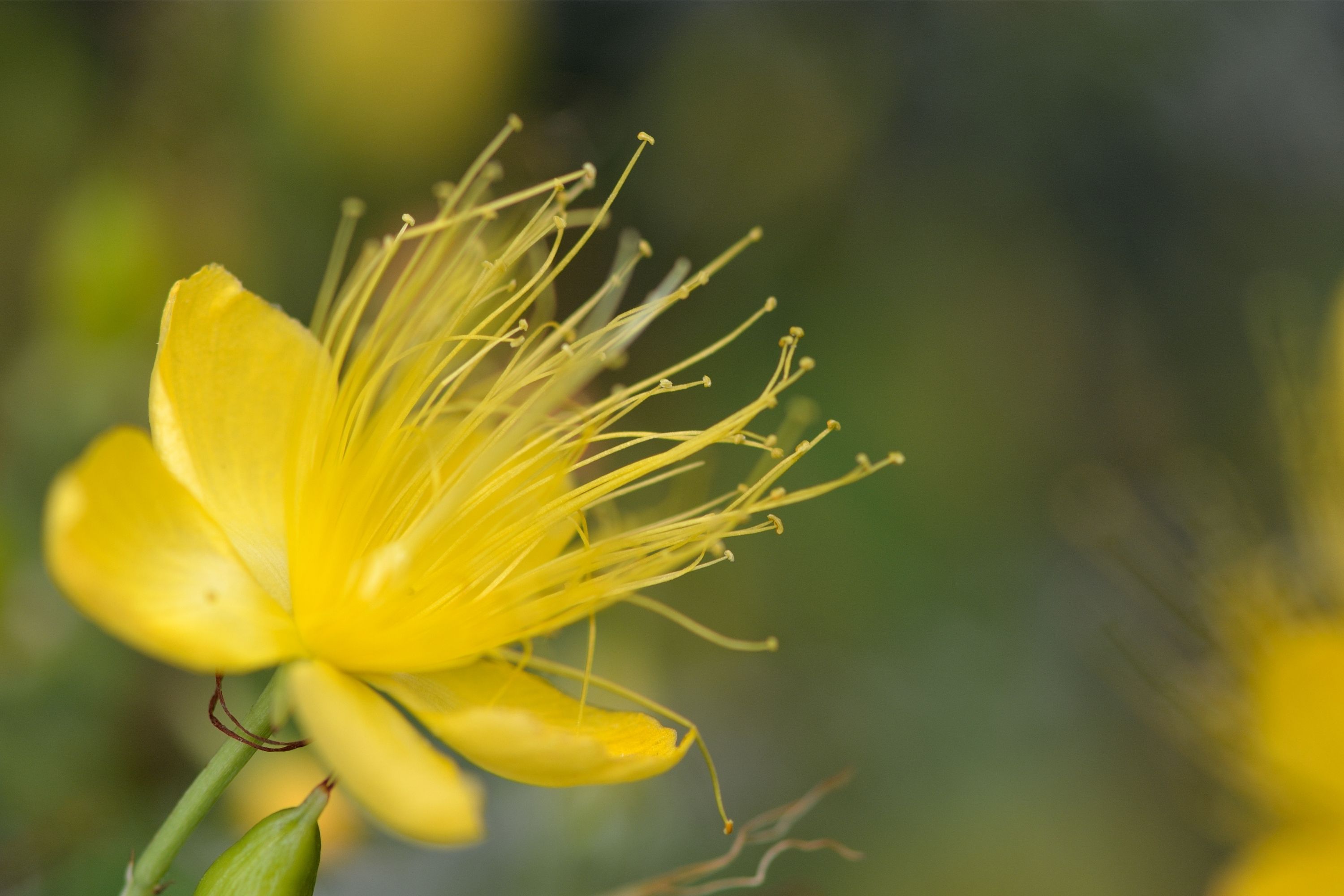Tutsan
(Hypericum androsaemum)

Description
Hypericum androsaemum, commonly known as Tutsan or Sweet Amber, is a perennial shrub belonging to the Hypericaceae family. It is native to Europe and Western Asia but is also found in North America, where it is considered an invasive species. The plant has been used for medicinal purposes for centuries and has a rich history in folklore and traditional medicine. In this article, we will explore the various aspects of Hypericum androsaemum, including its description, habitat, cultivation, medicinal properties, and folklore. Description: Hypericum androsaemum is a shrub that can grow up to 1.5 meters in height. The leaves are elliptical and can grow up to 7 cm long. They are dark green and shiny on the upper surface and lighter on the underside. The flowers are small, yellow, and have five petals. They are arranged in clusters at the ends of the branches and bloom from June to September. The fruits are red berries, about 6 mm in diameter, and remain on the plant until late winter. Habitat: Hypericum androsaemum is a plant that thrives in sunny or partially shaded areas. It prefers moist, well-drained soil but can also grow in poor soils. The plant is often found in hedgerows, woodland edges, and open meadows. It is native to Europe and Western Asia but has been introduced to North America, where it is considered an invasive species. Cultivation: Hypericum androsaemum can be propagated by seed or by vegetative means such as stem cuttings. Seeds should be sown in the autumn, and cuttings should be taken in late spring or early summer. The plant prefers a well-drained soil and can tolerate partial shade. It should be pruned in late winter or early spring to encourage bushy growth and to remove any dead or damaged wood. Medicinal Properties: Hypericum androsaemum has a long history of use in traditional medicine. The plant contains several compounds, including hypericin, hyperforin, and flavonoids, which have been shown to have antidepressant, anti-inflammatory, and antiviral properties. The plant has been used to treat a variety of ailments, including wounds, burns, stomach disorders, and anxiety. It is also used as a natural remedy for depression, with some studies showing that it can be as effective as prescription antidepressants. Folklore: Hypericum androsaemum has a rich history in folklore and superstition. In the Middle Ages, it was believed that the plant had the power to ward off evil spirits and witches. It was often hung over doors and windows to protect homes from malevolent spirits. In France, the plant was believed to have the power to break spells and curses. The name "Tutsan" is thought to come from the French "tout sain," meaning "all healthy," as the plant was believed to have the power to cure all illnesses. Conclusion: Hypericum androsaemum, or Tutsan, is a versatile plant that has been used for centuries in traditional medicine and folklore. Its medicinal properties have been the subject of scientific research, and it has been shown to have antidepressant, anti-inflammatory, and antiviral properties. The plant is easy to cultivate and can be propagated by seed or by vegetative means. Its rich history in folklore and superstition adds to its allure, and it continues to be an important part of traditional medicine in many cultures.
Taxonomic tree:







